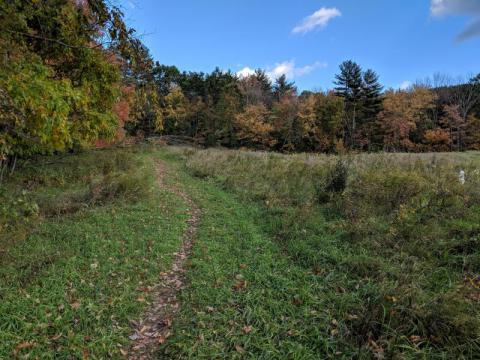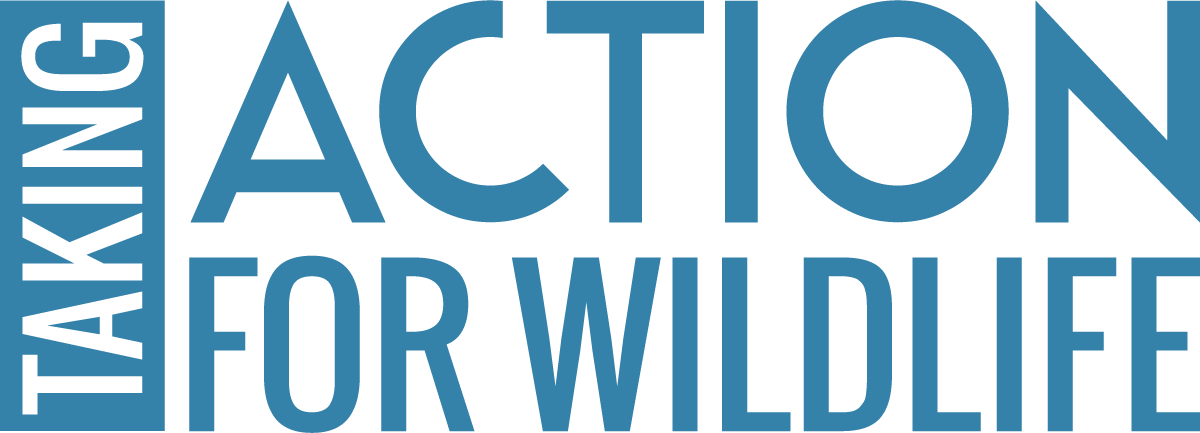A Guide for Grasslands: Town of Amherst Commits to Managing Bird Habitat

Amherst's Joppa Hill Farm property, with a new perimeter trail, after one year of not mowing. Photo by John Harvey.
Amherst has few grasslands, and they are mostly small and scattered. There are no 25-acre abandoned airport fields here, but grassland habitats in Amherst may support around 70 species of wildlife. In New Hampshire, grasslands are largely man-made and require periodic management to be maintained. The vision of the Amherst Conservation Commission (ACC) is to maintain grasslands in Amherst as a vital component of the larger mosaic of wildlife habitats in our landscape. In 2018, a year-long emphasis on strategic planning fostered by the Town Selectmen resulted in a written plan for managing grasslands for wildlife habitat.
This plan is not for the birds – rather, it is about building an appropriate habitat for them. The well-known phrase “Build it and they will come” holds somewhat true for grassland habitats. If you create and maintain grasslands in a way that benefits birds, you are likely to see those habitats used by the bird species found in your region that require them. Previously the grasslands in Amherst were mostly valued as scenic backdrops to town-owned trails. Following the planning process of the past year, they are now also managed for wildlife habitat. A lesson learned during the process has been that those trails through the middle of the field serve as predator paths to ground nesting birds. Something to consider!
Inventorying and managing grassland habitats on a town-wide scale has taken time and effort. The recipe we’ve followed has been to:
- Determine Goal. Ours is to manage town grassland habitats to support grassland wildlife species.
- Inventory & Characterize Grasslands. This includes identifying and mapping the location, size, current status, and deficiencies of all grasslands
- Consult the NH Wildlife Action Plan for information on species and management practices.
- Engage Experts from UNH Cooperative Extension, NH Audubon, and others
- Select management practices and appropriate timing
- Perform chosen management practices
- Survey & Monitor results
- Adjust practices & Repeat
Amherst was fortunate to have some GIS expertise for the grassland inventory. A community staff person developed a grasslands GIS layer that identifies grasslands, peatlands, and shrublands in town. A few volunteers did the grunt work digging out the parcel map/lot numbers, using Google satellite photos to determine grassland acreage (mostly openings in surrounding forest), eyeballing the sites, and writing descriptions. We identified fourteen grassland areas totaling about 250 acres, including Amherst Conservation Commission managed parcels, town-owned land managed by other departments (Cemetery, Recreation, Transfer Station), and a NH Audubon property. We decided to focus on five dry grassland areas for the wildlife habitat management and monitoring efforts. We subcontract to local farmers for hay and corn production on four other grassland areas.

Sky Meadow, a new acquisition for Amherst, was recently mowed. Photo by John Harvey.
Critical to good management is use of the NH Wildlife Action Plan. Don’t just read it, wrestle with it. It’s a very large resource, and it takes some time to dig out the information specific to your town – the habitats, the species, and the management practices. The WAP Appendix A exhaustively describes every bird species considered species of greatest conservation need (SGCN), but at a statewide scale; what you really want is a list specific to your town. The Taking Action for Wildlife Community Assistance program makes these lists available to towns they work with. [Contact Amanda Stone, UNH Extension Specialist in Natural Resources & Land Conservation at amanda.stone@unh.edu for more information.] Given that list, you can always reference Appendix A for more information on a particular species to refine your management.
In managing parcels, you can check out the list of Suggested Conservation Actions on page 24 of the Amherst Plan referenced above. Choose individual habitat management practices for each of your grasslands, tailored to the expected species. Further, make use of expert help and technical assistance from NH Fish and Game and UNH Cooperative Extension staff, including your County Forester. In Amherst, we worked with Matt Tarr (UNH Extension Wildlife Specialist), Ethan Belair (UNH Extension Hillsborough County Forester), and Dr. Rosalind Renfrew (Vermont Center for Ecostudies). In two visits, these professionals filled in numerous details, gave plentiful advice, and provided field notes. A follow-up contract with Dr. Renfrew provided a written protocol for bird counts for a field survey and training workshop to be conducted in the spring 2019.
So what does this all cost? Volunteer labor mostly – plan writing, inventorying, field surveys, tree girdling, etc. The Amherst Conservation Commission and the Board of Selectmen work well together, settling on some town funds to pay for contracted biannual brush hogging and protocol development. LUCT (current use) funds were used to pay for nutrients and a specialized grass mowing attachment to clear new trails. A well-reasoned plan with demonstrable benefits implemented in ways visible to conservation-minded citizens goes a long way to success. It’s for the birds..., well, actually, their habitats.
By John Harvey, Town of Amherst Conservation Commission
Winter 2019 Taking Action for Wildlife Newsletter


